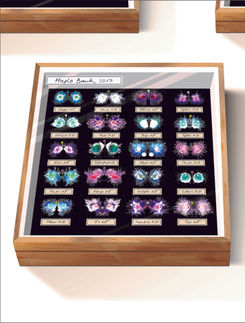The gene that turns ponies into large horses
TiHo researchers discover genetic causes of the body sizes of horses
Advertisement
Ponies have a maximum height of 148 centimetres. When the height at the withers is greater, they are deemed to be large horses. Scientists at the Institute for Animal Breeding and Genetics at University of Veterinary Medicine Hannover (TiHo) have investigated genetic causes for different body sizes in horses and found a gene with a very strong impact on size. The researchers compared thousands of genetic variations between ponies and larger horses to determine whether a specific mutation is responsible for size differences in horses. Such point mutations on single nucleotide polymorphisms (SNPs) are the most common causes of genetic variations. Scientists then used gene expression analysis to identify a gene that has a crucial effect on the size development of horses.
The growth of the horses is determined by a mutation that influences the LCORL (ligand-dependent nuclear receptor compressor-like protein) gene. This mutation has the effect that the gene is not read as often in large horses as it is in ponies. "We conclude from these findings that LCORL limits size growth in horses. The more strongly LCORL is expressed, the smaller the horses are" said Professor Dr Ottmar Distl, the head of the Institute for Animal Breeding and Genetics at TiHo. All original Przewalski wild horses carried the pony mutation and purebred Arab horses also have only this genetic variant.
Warmblood horses show a greater variation of the height at the withers and have a great genetic variation. Almost half of this variation is due to regulatory mutation affecting LCORL. The smaller warmblood horses are homozygous for the pony mutation. Warmblood horses in the medium-sized range carry both genetic variants and are therefore heterozygous, while large warmblood horses are homozygous for the large horse mutation. The large coldblood horse breeds such as the Rhenish-German Coldblood, the Saxon-Thuringia Coldblood, the Noriker and the South-German Coldblood do not include animals with the homozygous pony mutation and only a few of them are heterozygous. "The distribution of the pony mutation in the different horse breeds suggests that the mutation prevailing in large horses arose during the domestication of horses in Western Europe," explained Professor Distl.
LCORL influences the torso and hip length in humans, but does not act as a major regulator for size. However, scientists assume that LCORL has a very strong effect on the size of horses. There are also other genes involved in the complex characteristic "body size" and the scientists plan to investigate these genes in further studies.























































